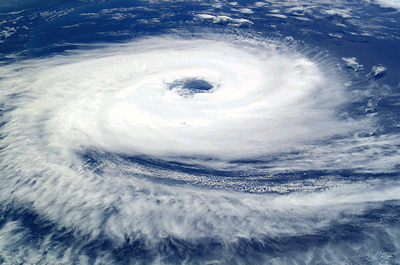It’s hard to tell exactly how climate change will affect every region on Earth, as the climate system is very complex, and changes will vary from region to region. For example, temperature change will be probably more dramatic near the poles and less dramatic closer to the equator. Some regions will experience increases in precipitation and runoff, while others will experience decreases. However, scientists are confident about some predicted changes.
Warmer Climate
Climate scientists think there’s a 99 to 100 percent chance there will be higher maximum and minimum temperatures by the end of the 21st century and there’s at least a 90 percent chance there will be more hot days and heat waves.1
 This could lead to more heat-related illnesses and deaths, in people as well as in livestock and wildlife. However, because there will be fewer cold days and higher minimum temperatures, there will be fewer health problems and deaths related to cold. Some pests that carry disease will have a greater range of activity. The risk of crop damage will increase for some crops and decrease for others. Homes will require more energy for cooling but for less heating. Some countries will see a decrease in tourism income, while others will experience an increase.
This could lead to more heat-related illnesses and deaths, in people as well as in livestock and wildlife. However, because there will be fewer cold days and higher minimum temperatures, there will be fewer health problems and deaths related to cold. Some pests that carry disease will have a greater range of activity. The risk of crop damage will increase for some crops and decrease for others. Homes will require more energy for cooling but for less heating. Some countries will see a decrease in tourism income, while others will experience an increase.
Rising Sea Levels
As temperatures increase, glaciers will melt, and heat in the atmosphere will cause the ocean volume to expand. The probability that these factors will cause a rise in sea levels is at least 90 percent.1 Higher sea levels will lead to increased erosion and flooding.
Changes in Precipitation
There’s at least a 66 percent chance there will be more heavy rainfall on many places on Earth, especially the tropics and, in the winter, the northern mid-latitudes.1 Increased precipitation will result in more flooding, erosion, landslides, avalanches and damage from debris. The cost of dealing with flood damage will go up.
Increased precipitation and warmer temperatures are likely to cause an increase in tropical cyclone activity.1 In addition to deaths that are directly storm-related, more cyclones will result in a greater risk of deaths by infectious disease. Cyclones will cause increased damage to coastal ecosystems, including mangrove and coral reefs.
Droughts may intensify in some parts of the Earth, including the region around the Mediterranean, central Europe, central North America, Central America and Mexico, northeast Brazil, and southern Africa, because of decreased precipitation and more evapotranspiration.1 This could lead to water shortages, reduced crop yields and more forest fires. Drought could cause the ground to shrink, damaging building foundations.
What’s Happening Now?
We can observe some of the effects of global climate change already. The Earth has been warming since 1880, when the industrial revolution was in full swing. Ten of the warmest years have occurred in the past 12 years. 2
The oceans are warming. In the last ten years, the sea level has risen at almost twice the rate as it has in the last century. Glaciers are shrinking and ice on rivers and lakes is breaking up earlier. 2
Parts of the world are experiencing heat waves that are longer and more intense than before. Trees are flowering early in the year. In response to changes in temperature and the availability of food, some animals and plants have already moved their ranges. All of these changes affect how people live. 2
The Earth has experienced drastic changes in climate long before people existed. Learn more about the history of climate change on Earth.